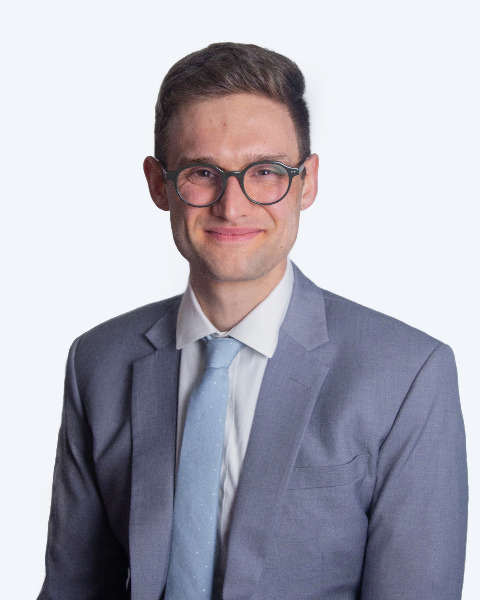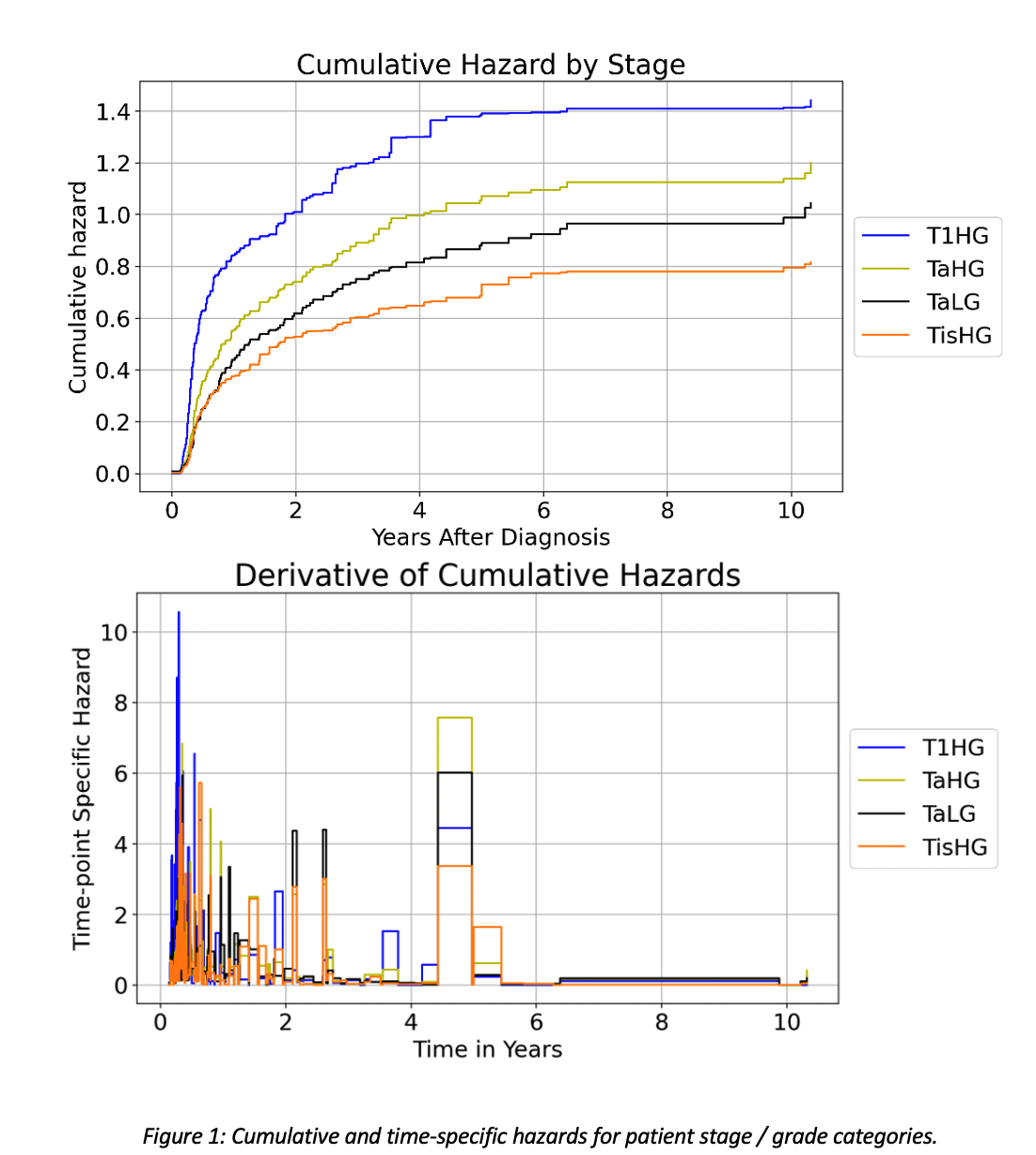Back
Poster, Podium & Video Sessions
Podium
PD14: Bladder Cancer: Epidemiology & Evaluation I
PD14-07: Long-term Cystoscopy Surveillance of Patients with Non-recurring NMIBC: Identifying the Point of Diminishing Returns
Friday, May 13, 2022
4:30 PM – 4:40 PM
Location: Room 255
Daniel Ranti*, Ralph Grauer, Yuanshuo Wang, New York, NY, Linda Dey, Lotta Renström, Gunnar Steinbeck, Abolfazl Hosseini, Stockholm, Sweden, Peter Wiklund, Reza Mehrazin, John Sfakianos, Nikhil Waingankar, New York, NY

Daniel Ranti, BS
Icahn School of Medicine
Podium Presenter(s)
Introduction: Non-muscle invasive bladder cancer (NIMBC) is a heterogenous disease with high rates of disease recurrence up to 70%. The current AUA recommendations include initial close surveillance, followed by annual cystoscopies for 5 years, and thereafter based on shared decision making. In part due to the intense surveillance and cost of regular cystoscopies, bladder cancer has become the most expensive cancer to treat per capita in the United States. Approximately, 60% of costs are due to surveillance and treatment of recurrence. This abstract sought to analyze long-term recurrence of NMIBC to inform surveillance choices.
Methods: NMIBC patients were identified from a population-based dataset including all patients diagnosed with bladder cancer in Stockholm County between 1995-96. Demographics (gender, age at diagnosis) and clinical and treatment data (initial histology, tumor grade, tumor stage, focality, size, recurrence information, and mortality) were gathered. The starting point of our analysis was first diagnosis, and the stopping point was either date of recurrence or date of last follow-up. A random survival forest was run with tumor size, number of tumors, grade, stage, sex, and age at diagnosis as covariates. Risk groups were defined as the combination of grade (high, low) and stage (Tis, Ta, T1). A cumulative hazards curve for each risk group was created, and timepoint hazards were estimated via the derivative of the cumulative hazards
Results: Median follow-up was 10 years, and median age at diagnosis was 71. There were 212 TaLG, 110 T1HG, 72 TaHG and 11 TisHG patients. Median time to recurrence was 283 days for TaLG; 190 days for TaHG; 119 days for T1HG; and 114 days for TisHG. Recurrence rates were 59.4% for TaLG, 66.7% for TaHG, 72.7% for T1HG and 27% for TisHG. Alive patients under surveillance without a recurrence were 9 for TisHG; 159 for TaLG; 57 for TaHG; and 84 for T1HG. Tumor number was the strongest predictor of recurrence (coefficient = 0.071) followed by tumor size (0.045). After 6 years, all patients showed low risk of recurrence.
Conclusions: Tumor number was most predictive of recurrence, and after 6 years, all patients without disease carried low risk for recurrence. These findings suggest that surveillance cystoscopy, particularly in those with unifocal tumors and no recurrences, may be unnecessary beyond 6 years after diagnosis in select patients.
Source of Funding: N/A

Methods: NMIBC patients were identified from a population-based dataset including all patients diagnosed with bladder cancer in Stockholm County between 1995-96. Demographics (gender, age at diagnosis) and clinical and treatment data (initial histology, tumor grade, tumor stage, focality, size, recurrence information, and mortality) were gathered. The starting point of our analysis was first diagnosis, and the stopping point was either date of recurrence or date of last follow-up. A random survival forest was run with tumor size, number of tumors, grade, stage, sex, and age at diagnosis as covariates. Risk groups were defined as the combination of grade (high, low) and stage (Tis, Ta, T1). A cumulative hazards curve for each risk group was created, and timepoint hazards were estimated via the derivative of the cumulative hazards
Results: Median follow-up was 10 years, and median age at diagnosis was 71. There were 212 TaLG, 110 T1HG, 72 TaHG and 11 TisHG patients. Median time to recurrence was 283 days for TaLG; 190 days for TaHG; 119 days for T1HG; and 114 days for TisHG. Recurrence rates were 59.4% for TaLG, 66.7% for TaHG, 72.7% for T1HG and 27% for TisHG. Alive patients under surveillance without a recurrence were 9 for TisHG; 159 for TaLG; 57 for TaHG; and 84 for T1HG. Tumor number was the strongest predictor of recurrence (coefficient = 0.071) followed by tumor size (0.045). After 6 years, all patients showed low risk of recurrence.
Conclusions: Tumor number was most predictive of recurrence, and after 6 years, all patients without disease carried low risk for recurrence. These findings suggest that surveillance cystoscopy, particularly in those with unifocal tumors and no recurrences, may be unnecessary beyond 6 years after diagnosis in select patients.
Source of Funding: N/A


.jpg)
.jpg)